Ely, Cambridgeshire
| Ely | |
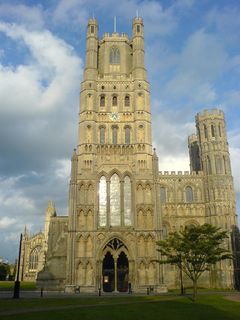 Ely Cathedral is often considered one of the Seven Wonders of the Medieval World |
|
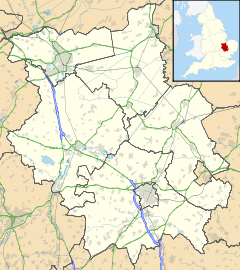 Ely
|
|
| Area | 23 sq mi (60 km2) [1] |
|---|---|
| Population | 15,102 (2001 Census) |
| - Density | 657 /sq mi (254 /km2) |
| OS grid reference | |
| Parish | Ely |
| District | East Cambridgeshire |
| Shire county | Cambridgeshire |
| Region | East |
| Country | England |
| Sovereign state | United Kingdom |
| Post town | ELY |
| Postcode district | CB6, CB7 |
| Dialling code | 01353 |
| Police | Cambridgeshire |
| Fire | Cambridgeshire |
| Ambulance | East of England |
| EU Parliament | East of England |
| UK Parliament | South East Cambridgeshire |
| List of places: UK • England • Cambridgeshire | |
Ely (pronounced /ˈiːli/ (![]() listen) EE-lee) is a cathedral city in Cambridgeshire, England. It is 14 miles (23 km) north-northeast of Cambridge.
listen) EE-lee) is a cathedral city in Cambridgeshire, England. It is 14 miles (23 km) north-northeast of Cambridge.
Ely was for a long time informally considered to be a "city" by virtue of being the seat of a diocese. In 1974 the status was confirmed by Royal charter on the parish council of the successor parish to Ely Urban District.
With a population of 15,102 in 2001, Ely is the third smallest city in England after Wells in Somerset and the City of London, and the sixth smallest in the United Kingdom, with St David's, Bangor, and Armagh also being smaller than it.
Contents |
History
It is commonly said that Ely derives its name from 'eel' and '-y' or '-ey' meaning island. This may be true, due to the position of Ely, an island in low-lying fens that were historically very marshy and rich in eels. It is also known as the Isle of Ely suggesting an island. It has even been claimed that, during the 11th century, monks of the town used eels as currency to pay their taxes. People are said to have walked around on stilts or used boats to get around the Fens and only people of the Fens knew the correct route so they wouldn't drown.[2]
The city's origins lay in the foundation of an abbey in 673 AD,[3] a mile (1.6 km) to the north of the village of Cratendune on the Isle of Ely, under the protection of St Ethelreda, daughter of King Anna. The abbey was destroyed in 870 by Danish invaders[4] and not rebuilt for over a hundred years. The site was one of the last holdouts in England to the rule of William I, its leader Hereward the Wake remaining independent until his surrender in 1071. Following William's defeat of Hereward he commissioned the construction of Ely Castle. It was demolished some time in the 13th century.
Oliver Cromwell lived in Ely for several years after inheriting the position of local tax collector in 1636.[5] His former home dates to the 16th century and is now used by the Tourist Information Office, as well as being a museum with rooms displayed as they would have been in Cromwell's time. Cromwell was one of the Governors of the Thomas Parson's Charity, which dates back to the sixteenth century and was granted a Royal Charter by Charles I. The Original Charter and copies of the Minute Book containing Oliver Cromwell's handwriting and signature have recently been loaned to the Ely Museum. The Charity still provides Grants and Housing to deserving local applicants.
Historical documents relating to Ely, including Church of England parish registers, court records, maps and photographs, are held by Cambridgeshire Archives and Local Studies at the County Record Office in Cambridge.
Modern times
Ely retains many historic buildings and winding shopping streets. There is a market on Thursday and Saturday each week. The city is on the River Great Ouse and was a significant port until the 18th century, when the Fens were drained and Ely ceased to be an island.
The river is a popular boating area with a large marina. The University of Cambridge rowing team has a boathouse on the bank of the river, and trains there for the annual Boat Race against the University of Oxford. In 1944 the Boat Race took place on the River Great Ouse near Ely, the only time it has not been held on the River Thames. On that occasion the race was won by Oxford.
Ely Cathedral
The Cathedral Church of the Holy and Undivided Trinity is known as the "Ship of the Fens",[6] a name inspired by the distant views of its towers, which dominate the low-lying wetlands known as The Fens. The diocese of Ely was created in 1108 out of the see of Lincoln, and a year later the bishopric of Ely was founded. The cathedral was started by William I in 1083. In 1322 it suffered the collapse of the main tower, which was rebuilt as an octagon. The cathedral was completed in 1351. The city took part in the Peasants' Revolt of 1381.
Ely is the nearest cathedral city to Cambridge, which lies within the same diocese but does not have its own cathedral. The Diocese of Ely covers 1507 square miles (3900 square kilometres) and holds 610,000 people (1995) and 341 churches. It includes most of the county of Cambridgeshire except for most of Peterborough and three parishes in the south which are in the diocese of Chelmsford. The Diocese of Ely also includes the western part of Norfolk, a few parishes in Peterborough and Essex, and one in Bedfordshire.
Geography
 |
Little Downham | Chettisham | Queen Adelaide |  |
| Witcham | Prickwillow | |||
| Witchford | Little Thetford | River Great Ouse Stuntney |
Demography
| Historical population of Ely | |||||||||||
| Year | 1801 | 1811 | 1821 | 1831 | 1841 | 1851 | 1861 | 1871 | 1881 | 1891 | 1901 |
|---|---|---|---|---|---|---|---|---|---|---|---|
| Population | 3948 | 4249 | 5079 | 6189 | 6849 | 7632 | 7982 | 8166 | 8171 | 8017 | 7803 |
| Year | 1911 | 1921 | 1931 | 1941 | 1951 | 1961 | 1971 | 1981 | 1991 | 2001 | 2011 |
| Population | 7917 | 7690 | 8381 | [nb 1] | 9988 | 9803 | 9966 | 10392 | 11291 | 15102 | – |
|
Census: 1801–2001[1] |
|||||||||||
Transport
Rail
Ely railway station on the Fen Line is a major railway hub. There are direct trains to Cambridge, London, most of East Anglia, the Midlands and the North. There are connecting services to many other parts of England and to Scotland.
Road
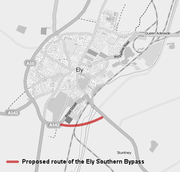
Ely is on the route of the north-south A10 trunk road from London to King's Lynn (although the road now bypasses the town centre. The east-west A142 road from Chatteris to Newmarket passes through the south of the town.
A proposal for an Ely southern bypass of the A142 is included in the major schemes of the Cambridgeshire Local Transport Plan. The proposed route would be a single, two lane carriageway and would include 1.9km of new road construction between new roundabout junctions on Stuntney Causeway and Angel Drove.
The bypass is intended to reduce congestion in Ely, and to avoid the low bridge on the Ely to Kings Lynn railway line, which has the third highest vehicle strike rate in the country. The scheme has an estimated cost of £15m and an estimated construction date of 2009 - 2011.[7] However, as of July 2009 the proposal is still in the planning stage. A transport model for Ely which assessed the impact of the proposed bypass was released in June 2009.[8]
Sport
Ely City F.C. is a football club that was established in 1885 and joined the Eastern Counties Football League in 1960. In the 1997-98 season, they reached the 3rd round of the FA Vase. For the 2007-08 season, they are members of the Eastern Counties Football League Division One. They play at the Unwin Sports Ground.[9]
Cambridge University Boat Club also train on the River Great Ouse as part of their pre boat race training.
Cricket Legend Bruce King plays for Ely Cricket Club.
Twin cities and towns
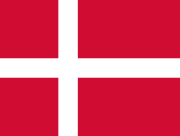 Ribe, Municipality of Esbjerg, Denmark
Ribe, Municipality of Esbjerg, Denmark- Wagga Wagga, New South Wales, Australia
Education
Schools in Ely include The King's School, Ely, Ely Community College and St. John's Community Primary School. The Ely High School for Girls opened in 1905 in St. Mary's Street, moving to the Downham Road site in 1957. In 1972 EHS closed when state secondary education in the area changed to the comprehensive model, the site becoming the City of Ely College - now the Community College.
People from Ely
The former RAF hospital based in Ely meant that many children of serving RAF parents were born in the city. These include rugby union player and Rugby World Cup 2003 winning manager with England national rugby union team, Sir Clive Woodward, Australian émigrée actor Guy Pearce, and actor Simon MacCorkindale.
Autogyro world record holder Ken Wallis was also born in Ely. Other notable people from Ely include The Sisters of Mercy singer Andrew Eldritch, journalist Chris Hunt, and The Dark Knight/Blood Diamond executive producer Kevin De La Noy. Folk singer Boo Hewerdine and crime writer Jim Kelly both currently live in the city.
See also
- List of places in Cambridgeshire
Gallery
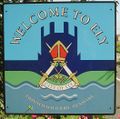 Signpost in Ely |
 Ely Cathedral and Palace Green |
 Ely on a winter morning |
 The Cathedral viewed from The Gallery |
 The Market Place, Ely |
 Lots of produce at the French market |
 A stall on the French market |
 Eel day parade down Fore Hill |
 Oliver Cromwell's house, tourist information and museum. |
 The river quayside |
 The River Great Ouse, Ely |
 The quayside and river Great Ouse |
 Canal boats moored on the river |
 View from St Mary's churchyard |
 Ely Cathedral seen from the park |
 The Gallery and 14th century Porta at dusk |
 Looking back towards the riverside Cutter Inn |
Notes
- ↑ No census 1941 due to WWII
References
- ↑ 1.0 1.1 "Historic Census Population Figures" (XLS). Cambridgeshire County Council. 2010. http://www.cambridgeshire.gov.uk/NR/rdonlyres/C36C6418-DEFD-4ED1-B050-9984100DF110/0/HistCensusEastCambs0106.xls. Retrieved 20 August 2010.
- ↑ "Eels could be slipping away from city’s river", Ely Standard Web Editorial, July 13, 2007. Retrieved December 12, 2007.
- ↑ Diocese of Ely website
- ↑ "British History Online". British-history.ac.uk. 2003-06-22. http://www.british-history.ac.uk/report.aspx?compid=21879. Retrieved 2010-07-17.
- ↑ David Plant (2007-05-18). "British Civil Wars, Commonwealth and Protectorate 1638-1660". British-civil-wars.co.uk. http://www.british-civil-wars.co.uk/biog/oliver-cromwell.htm. Retrieved 2010-07-17.
- ↑ "Ely Cathedral website". Elycathedral.org. http://www.elycathedral.org/history/ship_of_the_fens.html. Retrieved 2010-07-17.
- ↑ "Cambridgeshire LTP 2006–2011". Cambridgeshire County Council. http://www.cambridgeshire.gov.uk/NR/rdonlyres/8932742C-FF85-4CE5-B08D-2430C3E3D988/0/LTP06P3.pdf. Retrieved 2009-07-06.
- ↑ "Ely Masterplan – Issues For Consideration". East Cambridgeshire District Council. 2009-06-15. http://www.eastcambs.gov.uk/docs/agendas/ElyMPGDWorkingParty/ElyMPGDWorkingParty150609ag_J19.pdf. Retrieved 2009-07-06.
- ↑ Bauckham, David (2006). Dugouts. New Holland. ISBN 1-8453-7478-9.
External links
|
||||||||||||||||
|
||||||||||||||
